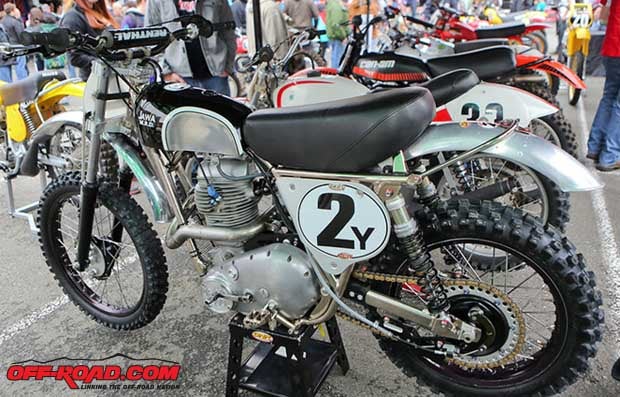
This MRD Jawa project started after riding a Matchless 500 at the 2004 Chehalis Premier/Classic, which is held in September. After Riding the Matchless, I just had to build myself a Premier 500 motocross bike. I knew this was going to be a definite challenge to complete, but the end result would be well worth the time, effort and money invested. I also knew that any bike that I would build would have to shift on the left. I really had a tough time shifting the Matchless from the right side, and most importantly remembering the rear brake was on the left side.
My original goal was to build a Premiere 500 bike within a two-year timeframe. But after starting this project, my new goal was to have it ready much sooner. At the early conception of my project, I was not sure of what motor or frame kit that would be best for the design I had envisioned.

The first thing I purchased was a 1960s Jawa/ESO 500cc Speedway 2-valve type 890, which still incorporates the total loss oil system. This engine had been freshly rebuilt and was converted to run on gasoline by adding a spacer plate to lower the compression. As purchased, the Jawa motor was ready to be installed in a yet-to-be-determined frame kit.

I then needed to decide what type of chassis I was going to use for my Jawa-powered project. Recommended by Terry Hyde of Canada, it was suggested that I take a serious look at the Arthur Harris replica frame kit, built by Pat French of MRD in the UK. Terry sent me pictures of Patís personal MRD Jawa that he had built for himself. This was an impressive motorcycle. The decision was made: I knew I had to build a replica of this bike for myself. I placed my order for a complete MRD rolling chassis. The chassis kit arrived in Seattle the first part of September 2005. After a few weeks of being held up in customs, I was finally able to bring the chassis home.
My next item to find was a late-model AMC gearbox. After finding and purchasing a gearbox on Ebay, I shipped it over to Pat in the UK so he could do the necessary crossover shift shaft modifications, as well as fit and align the gearbox with the motor mount plates and the rear wheel. I also had a reverse shift cam installed at this time.
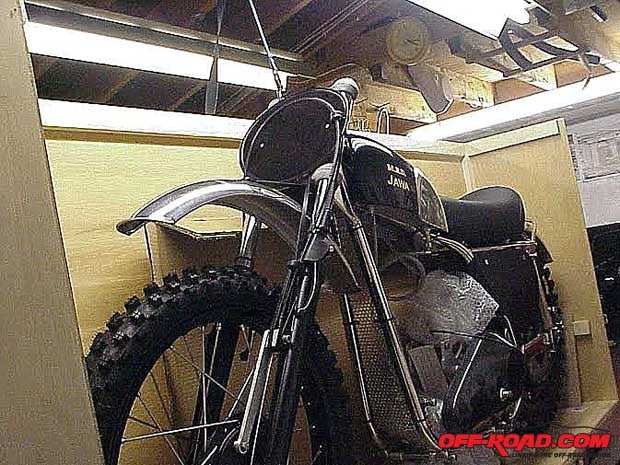
After receiving the chassis, I was busy adding, building and bolting everything that was needed to complete my MRD Jawa. The wheel assemblies use KTM magnesium hubs, Spanish Morad aluminum rims, and stainless-steel spokes. The suspension is handled by Ceriani forks and 380mm long Ohlins shocks.
A 17-tooth speedway sprocket is used at the primary, mated by a 428 primary chain to a NEB clutch. Final drive is a 17/53 tooth gear combination. Iím using Renthal twinwall handlebars that are mounted to a set of custom billet aluminum triple clamps that I machined. The throttle assembly is a modern YZ Yamaha-style throttle and cable mated to a Mikuni 36mm. I machined a billet aluminum intake manifold to mate the Mikuni carburetor to the Jawa intake. ASV lever controls are used for the clutch and front brake, set up using a modern YZ250 clutch cable. To improve the front brake stopping power, I machined a billet aluminum backing plate. With the backing plate and the use of a XR 200 front brake cable, there came a huge improvement with the front brake stopping power.
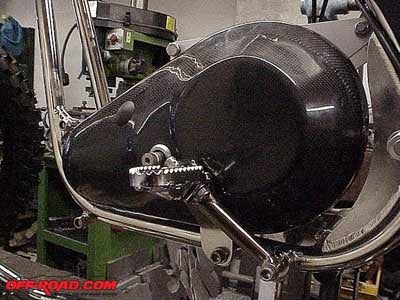
For the gearshift lever, Iíve combined a late model Husqvarna shift lever/spline with a late model Honda folding tip shift lever, as well as a custom machined billet aluminum rear brake pedal. The footpegs are 57mm wide Lightspeed titanium YZ pegs.
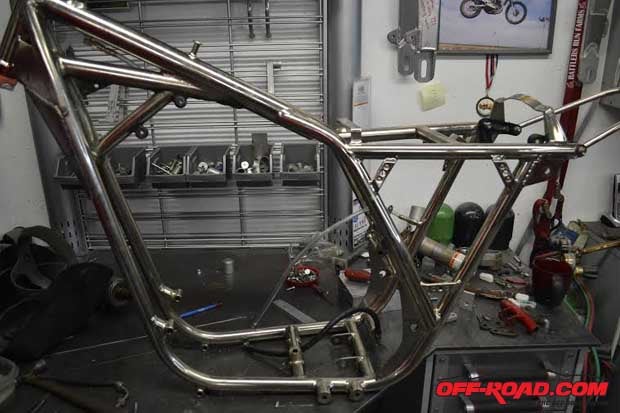
The ignition on the Jawa is a PVL. The PVL is much more reliable than the original PAL ignition. I machined an adapter to mount the ignition rotor to the crankshaft, while still leaving room for the primary drive sprocket. Modified A10 primary cases were machined/welded to mount the ignition stator. My friend Randy Skiver (of flat track fame) was a huge help with this modification. This modification was time consuming (frustrating at times), but well worth the effort.

The crankshaft in the Jawa is 8 pounds lighter than the stock Jawa crank. The stock crank weighed 25 pounds and the lighter crank weighs 17 pounds. My friend, Tommy Karlsson of Sweden, supplied the lighter crankshaft. The lighter crank made the bike rev quicker and improved the power delivery from top to bottom. The Stainless steel up pipe was made and added much later in the build. This pipe replaced the original low pipe that was dented and worn out. The bike weighs 262 pounds with no fuel.
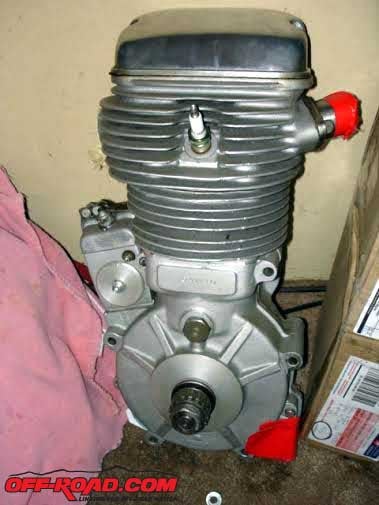
Iím impressed with the handling and cornering characteristics, as well as the power delivery of this bike. It is stable at high speed but also corners on a dime. The front and rear brakes are awesome. The original total cost of my MRD Jawa was around $13,000. Pat Frenchís quality and craftsmanship are the best! He built a beautiful looking chassis that was assembled with no problems.

MY HISTORY:
I started riding on my first motorcycle, a Honda CT 70, in 1970. In 1974, I started racing locally riding a 1974 125 Yamaha MX. I turned pro locally in 1976 and held an AMA pro license from 1978 to 1980 racing in selected AMA 250cc Supercross and National events. Suffering a knee injury in 1979 and knowing I wasnít good enough to go anywhere at the pro level, I just rode for fun racing occasionally the following years.

In 1993 I joined the vintage racing scene. The vintage bike hobby is a flashback to the past when I was a kid. Part of the fun for me, besides the vintage racing, has been to restore and build these bikes of the past. Being a machinist and tool designer by trade, along with having a Bridgeport EZ-trak machine at home, has been a big benefit for me working on and building my race bikes. Over the years, I have met so many great, friendly people all over the world, as well as some of my motorcycle racing heroes I had growing up. That what makes these vintage motorcycles so much fun. You canít ask for anything more than that.



 Your Privacy Choices
Your Privacy Choices